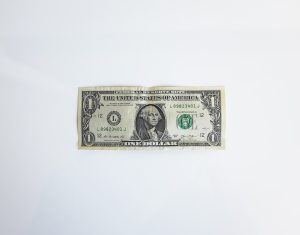Forex trading is one of the most lucrative financial markets in the world, with trillions of dollars exchanged daily. However, forex trading is also highly volatile and unpredictable, making it important for traders to have a good understanding of the market and the various currency pairs involved. One of the key concepts in forex trading is currency correlation. In this article, we will explore what currency correlation is and which forex pairs correlate.
What is Currency Correlation?
Currency correlation refers to the relationship between two or more currency pairs. This relationship is based on the idea that the movements of different currency pairs are not random but are influenced by various factors such as global economic events, political developments, and market sentiment.
Currency correlation can be positive or negative. Positive correlation means that two currency pairs move in the same direction, while negative correlation means that two currency pairs move in opposite directions. For example, if the EUR/USD and GBP/USD currency pairs have a positive correlation, then when the EUR/USD goes up, so does the GBP/USD.
Currency correlation is important for forex traders because it can help them identify potential trading opportunities and manage their risk by diversifying their portfolios. Traders can use currency correlation to hedge their positions by opening trades in two or more currency pairs that have a negative correlation, reducing their overall risk exposure.
Which Forex Pairs Correlate?
There are many currency pairs involved in forex trading, but not all of them are correlated. Some pairs have a strong correlation, while others have a weak or no correlation. Here are some of the most popular forex pairs and their correlations:
EUR/USD and GBP/USD
The EUR/USD and GBP/USD currency pairs have a positive correlation. This means that when the EUR/USD goes up, so does the GBP/USD, and vice versa. This correlation is due to the fact that the euro and the pound are both major currencies in the European Union, and their economies are closely linked.
USD/JPY and EUR/JPY
The USD/JPY and EUR/JPY currency pairs have a positive correlation. This means that when the USD/JPY goes up, so does the EUR/JPY, and vice versa. This correlation is due to the fact that the Japanese yen is often seen as a safe-haven currency, and when investors seek safety, they tend to buy the yen, which strengthens the currency and pushes up the USD/JPY and EUR/JPY pairs.
USD/CAD and AUD/USD
The USD/CAD and AUD/USD currency pairs have a negative correlation. This means that when the USD/CAD goes up, the AUD/USD goes down, and vice versa. This correlation is due to the fact that the Canadian dollar and the Australian dollar are both commodity currencies, and they are both heavily dependent on the prices of commodities such as oil and gold. When the prices of these commodities go up, the Canadian dollar tends to strengthen, while the Australian dollar weakens, and vice versa.
USD/CHF and EUR/USD
The USD/CHF and EUR/USD currency pairs have a negative correlation. This means that when the USD/CHF goes up, the EUR/USD goes down, and vice versa. This correlation is due to the fact that the Swiss franc is often seen as a safe-haven currency, and when investors seek safety, they tend to buy the franc, which strengthens the currency and pushes up the USD/CHF and EUR/USD pairs.
Conclusion
Currency correlation is an essential concept in forex trading, and traders need to understand which forex pairs correlate to make informed trading decisions. Positive correlation means two currency pairs move in the same direction, while negative correlation means two currency pairs move in opposite directions. Traders can use currency correlation to identify potential trading opportunities and manage their risk by diversifying their portfolios. By understanding currency correlation, traders can improve their profitability and minimize their risk exposure.






